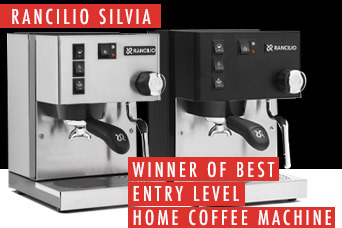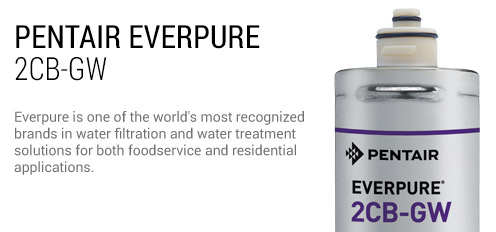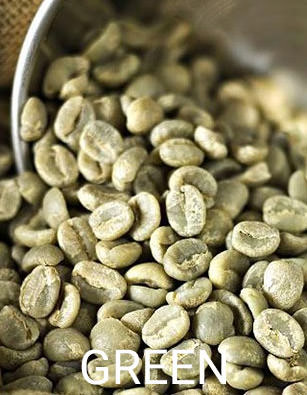Not a Coffee Parts Wholesaler yet?
Want to be a Coffee Parts Wholesaler??
1300 129 129 9am-5pm M-F AEST
Machine Overview: Part Explanations
ELECTRICS / BOILER SECTION
Solenoids:
- Can be thought of as an electronic tap, when electrical current is given to the coil (black box) it pulls the plunger in to solenoid body allowing water to flow from the inlet to the outlet.
- They are divided into two parts: coil (black body with electrical connections) and the body (brass section with either a flat or T-piece base).
- Complete solenoids are interchangeable; however differing brand coils to bodies do not interchange.
- 2-way: Used to fill the boiler or as a replacement to a steam/hot water tap.
- 3-way: Used to activate the water for the group head, with the over pressure being released by the third spout, usually connected to the drain via a silicon hose, or brass pipe.
Pressurestats:
- Can be thought of as a switch activated by pressure.
- Can be adjusted and is usually set at approximately 1.2 bars
- When the pressure reached the predetermined level (approximately 1.2 bars) the pressure stat cuts off, as such it turns off the element. It will then turn on the element when the pressure drops again.
- The on and off cycle of the pressure stat will depend on the variance (different from brand to brand) and this process is called cycling.
- All commercial machines have these units, the difference is the thread size.
Anti-Vacuum Valve:
- These allow oxygen to enter the boilers until pressure builds in the boiler (i.e. as the temperature rises in the boiler the steam creates pressure). Once pressure builds, it pushes the valve up and shuts the valve.
- They are usually 1/4" male thread
- Part numbers: 618968 or 700750 and fit most commercial machines.
- All commercial machines have these valves, the difference is the thread size.
Pressure Release Valve (Safety Valves):
- These valves release the steam pressure from the boiler (usually if it reaches 1.5 bars) if the pressure stat fails to cut off the element.
- They can be adjusted manually, or pre-set as in the ones with EU certification.
- All commercial machines have these valves, the difference is the thread size.
Flow Meters:
- These control the flow of water to the group head, only allowing a predetermined amount to pass through.
- Basically they have a star with a magnet inside, and each rotation of the star allows a calculate amount of rotation through, and as such it can deliver exactly 30ml (or any other determined amount).
- Used in volumetric commercial coffee machines.
Elements:
- Sit inside the boiler, and when given an electrical current heat up the water in the boiler, obviously also creating the steam pressure in the boiler.
- The larger the wattage of the element, the quicker the water heats up and hence the faster the 'recovery' of the machine.
- Elements tend to be machine specific, and the base plate and element length (measured from base plat to end of element) must match the current element. The length varies depending on how many groups the machine has, and size of the boiler.
- The terminals or contactors refer to the electrical connections on the base plate of the element. Generally if more than two contactors these are bridged (connected together) in order for the element to run just two wires. Removing the bridges will reduce the heating strength and power consumption of the element and reduce the recovery of the machine.
Thermostats:
- Are not commonly used in modern commercial coffee machine any more.
- They are switches based on temperature; as such they turn on/off at pre-determined temperatures.
- In commercial machines, they were used to protect the element if the machine overheated due to a low water level, however machine now have auto-fill probes which automatically refill the boiler with water when it runs low, hence reducing the need for these thermostats.
- However they are still used in domestic coffee machine without heat-exchangers.
Heat Exchanger:
- This is a pipe which transverses the boiler in which the 'coffee water' flows from the pump, directly to the group head through the boiler (not the same water as used for hot water and steam).
SWITCHS / TOUCH PADS / AUTO FILL BOXES
Main Switch:
- This is the main power switch to a machine.
- There are two main types: Two pole on/off, Three pole on without element / on with element / off
- Generally, the three positions allows for the machine boiler to be filled without turning on (and burning) the element. Some machine only have a two pole switch, however will have a manual water fill valve.
Touch pads:
- These touch pads operate the water which comes out of the group head 'coffee water', by allowing the solenoid to operate, and in a volumetric coffee machine allowing the solenoid and flow-meter to operate.
- Manual machines don't have a touch pad and are operated by leavers.
Auto Fill Boxes:
- These boxes, usually made by Gicar are electronic boxes which control the water level of the machine. They are usually connected to the main switch, element, water level probe, two-way solenoid and water pump, and give the electrical signal to simultaneously control these parts in-order to maintain a stable water level.
- When replacing, they should match the box already in the machine i.e. rl40/1e/2c
PORTAFILTERS
Portafilters (Group Handles or pf's):
- These are the brass handles in which coffee is made.
- They are brand specific, and to an extent differing brands will use different filter baskets.
- Single, refers to a portafilter with a single spout and basket.
- Double, refers to a portafilter with a double spout and basket.
Filter Baskets:
- These vary in size are usually called single (7gr), double (14gr) or triples (21gr).
- Actual capacity generally varies 1-2gr per basket size.
- They also vary in ridge size and position (ridge is the grove where the baskets holds onto the filter spring) and lip size (lip refers to the size of the top section which raps around the portafilter).
Filter Baskets Springs:
- They fit inside the portafilter to hold the filter basket in place.
- They are available in different thicknesses, however we carry 1.1mm and 1.2mm
- The thicker the spring, the harder to get the basket in, however thicker springs are needed for ridgeless filter baskets.
- They tend to become loser over time.
Spouts:
- Are usually 3/8" in thread (except for La Cimbali which also have screw on spouts) and connect to the bottom of a portafilter to allow the coffee to flow into the designated cups.
- A single spout is uses to serve single cups, usually 700024
- A double can be used to serve either one or two cups, usually 511672
- Open double refer to spouts without top covers such as 511672-A or 511673
Handles:
- These are the plastic, rubber or wooden handles used on portafilters.
- Although these are just the handles, people commonly refer to handles as the whole portafilter.
- Generally, they come in 10mm and 12mm threads, however some handles are sleeves in format and slide over a spindle.
GROUP HEAD
Group Head Seals / Gaskets:
- These seals sit in the group head of the machine to seal between the machine and portafilter.
- Thicker seals (or spaces, and occasionally both) are generally used to compensate for wear and tear on the group head lugs / group head grooves.
- Ideally, they should be replaced every 6 months, as rubber becomes brittle with the constant cycle of heating and cooling. Once the rubber becomes brittle, the group head may start leaking around the portafilter, the portafilter will generally start traveling past perpendicular and the seal becomes increasingly hard to remove.
Spacers / Shims:
- These spacers and used in conjunction with group head seals to compensate for wear and tear on the group head lugs / group head grooves.
- Each spacer is equivalent to increasing the group head seal by between 0.5mm and 0.8mm depending on the spacer.
Shower Screens / Filters:
- These screens diffuse the group head water to spread evenly over the filter baskets where the coffee is.
- They become lose and blocked over time, and need replacing.
- Generally they are replaced by removing the screw or bolt located in to center of the screen, attaching the shower screen to the shower screen holder, except for the case of e61 group heads in which the actual group head seal holds up the shower screen in which the seal has to be removed to replace the seal.
- It is sometimes easier to back-flush the machine (using back-flushing detergents) prior to removing the screen in order to remove the coffee residue which is sticky in nature.
STEAM SECTION / HOT WATER
Steam Valves/ Hot Water Valves:
- These valves act as taps, and can be either rotational or lever: The steam valve connects to the top of the boilers, and attaches to a steam arm while the water valve connects to the bottom of the boiler, and attaches to a water arm.
- Valves can also be in the newer machines solenoid operated, in which the solenoid is the valve and is controlled via and electronic switch.
Steam Arms:
- These are the arms which connect to the steam valve. They can vary in length.
- They are generally either ball jointed in which they can swivel 360 deg (all ball jointed arms are interchangeable such as 700724) or they are semi fixed in which they only travel forward and backwards such as 617301.
- Steam tips are removable on all steam arms.
Steam Tips:
- Most tips have a female 10mm thread, however there are many different styles available.
- Most importantly in steam tips are the holes, their size and positioning.
- Generally a four hole steam tip is used on commercial machines, and 2 holes for domestic. The number of holes is really determined by the volume of milk being produced, with low volumes usually preferring less holes in order to slow down the milk temperature increase and allow time to stretch the milk and hence create micro-foam (the silk look).
MOTORS AND PUMPS
Motors:
- Can be either set internally or externally to the machine, the same motor can be used, the only difference being the small box covering the electrical connections.
- The motor is only a device that when given electrical current, a shaft spins hence spinning a 'star' in the pump increasing the water pressure from its present state(approximately 3 bars for a tap connection or 0 bars from a bottle/water tank) to a higher pressure (usually approximately 8-9 bars).
- Motors can also be water cooled (always internal) which basically means having a copper pipe filled with water which both cools the motor and heats the water. However this is not very common.
Capacitor:
- The capacitor stores power which gives the motor the extra boost it needs to start, like a starter motor in a car.
- These are usually between 12 to 16 amps, while the motor actually works at 10 amps.
Rotary Pumps:
- These pumps are used with the above motors.
- They are generally made by Procon, although other brands are available.
- The main difference between pumps is on the connection to the motor, generally they come in clamp ring 700008, two-bolt 630177 and three-bolt 700009.
- Pumps using bolt connections need connectors between the pump and motor.
- The pump pressure can be adjusted via the screw fitting on its side.
Vibrating Pumps:
- These pumps work on a vibrating electrical pulsation.
- Generally used on home level machines.
- Two main types (both do the same job, however use differing connections): Ulka: barb inlet and 1/8" female outlet, Fluidotech: 1/8" female inlet and outlet
- Pressure cannot be changed without using a by-pass valve.
Please Note: These are the personal views and understanding of the coffee machine environment by Coffee Parts staff members, and Coffee Parts takes accepts no responsibility for the accuracy of such information. This is intended for general reading only.











